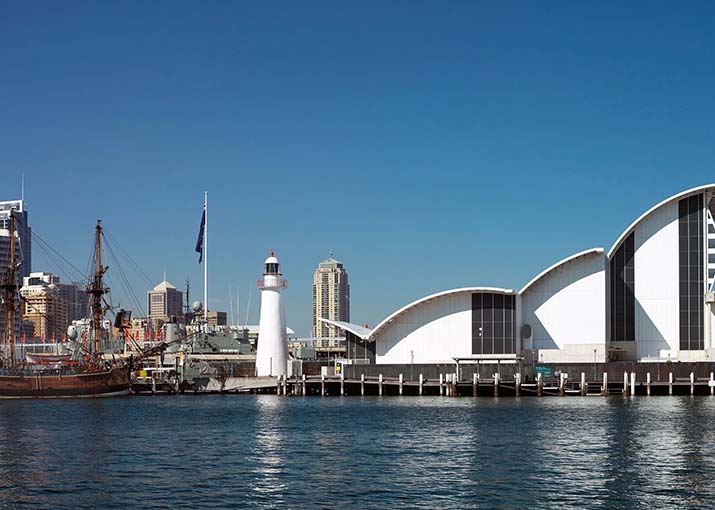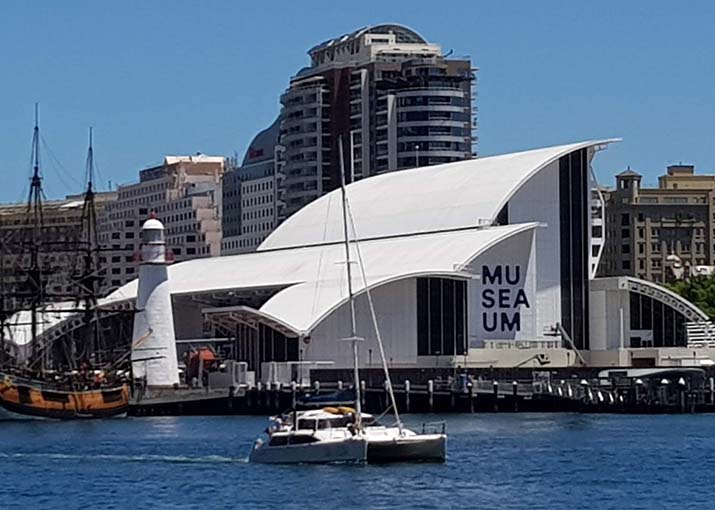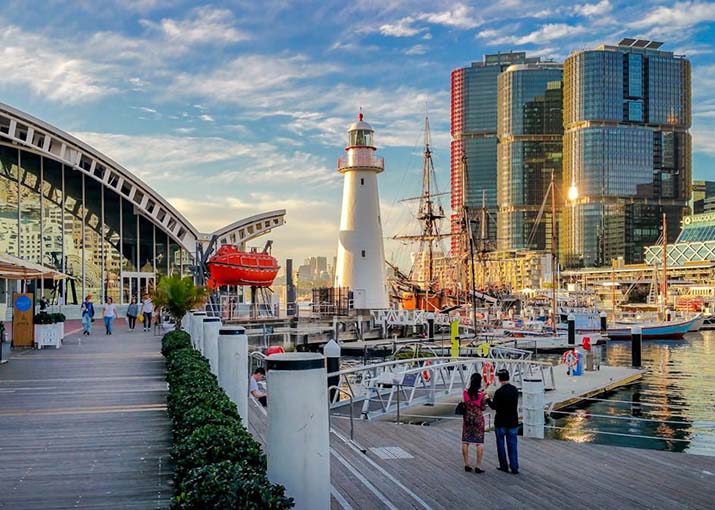Sydney is a captivating metropolis on the east coast of Australia, boasting numerous attractions that cater to the needs of all types of travelers. The Australian National Maritime Museum is nestled amidst towering skyscrapers, pristine beaches, and a vibrant cultural landscape, paying homage to the country’s rich maritime heritage. I’m embarking on a comprehensive journey to visit this extraordinary museum located in Darling Harbour. Here, I provide an extensive exploration, encompassing essential information, personal experiences, practical tips, planning recommendations, and travel advice to ensure your trip is truly memorable.
A visit to the Australian National Maritime Museum in Sydney promises an enriching and unforgettable experience. It is a place where history intersects with the modern world, allowing you to explore Australia’s maritime heritage within the stunning backdrop of Darling Harbour. Whether you’re a history enthusiast, a maritime lover, or simply a curious traveler, this museum has something to offer everyone. So, seize the opportunity, immerse yourself in the captivating narratives of Australia’s seafaring past, and make the most of your journey. May your visit to this remarkable museum be just one of many adventures in the enchanting city of Sydney.
Key Highlights of the Australian National Maritime Museum

Before we dive into the heart of this experience, it’s important to understand why the Australian National Maritime Museum is a must-visit attraction in Sydney:
1. Maritime Heritage:
The museum serves as a living testament to Australia’s maritime legacy, boasting an extensive collection of vessels, artifacts, and exhibitions spanning centuries. From historic warships to indigenous watercraft, it offers an in-depth look into the nation’s maritime evolution.
2. Iconic Exhibits:
Prepare to be captivated by the museum’s remarkable exhibits. Highlights include the faithful replica of the HMB Endeavour, offering visitors the unique opportunity to step aboard Captain Cook’s famed vessel, and the submarine HMAS Onslow, providing an intriguing glimpse into life beneath the ocean’s surface.
3. Interactive Learning:
The museum’s commitment to interactive learning ensures an engaging experience for visitors of all ages. Hands-on displays, multimedia presentations, and immersive activities guarantee an educational and entertaining visit.
4. Prime Location:
The museum’s enviable location in Darling Harbour offers breathtaking waterfront views and easy access to other attractions, making it an ideal starting point for a day of exploration in Sydney.
5. Cultural and Artistic Events:
Beyond its maritime exhibits, the museum hosts a range of cultural and artistic events, from contemporary art exhibitions to indigenous cultural displays, enriching the visitor experience.
6. Dining and Souvenirs:
Take a break at the museum’s waterfront café, offering delectable treats and panoramic views. Don’t forget to visit the gift shop for maritime-themed souvenirs and keepsakes.
Personal Experience

My visit to the Australian National Maritime Museum was truly exceptional. Arriving at Darling Harbour early in the morning, I was greeted by the sight of glistening sailboats and a bustling waterfront promenade. The museum’s distinctive, ship-like architecture immediately drew my attention, and I couldn’t wait to embark on this maritime adventure.
Upon entering the museum, I was struck by the grandeur of the HMB Endeavour replica. Stepping aboard, I felt transported back in time to Captain Cook’s historic voyages of discovery. The meticulous attention to detail and historical accuracy of the vessel left me in awe, providing a rare opportunity to experience a slice of maritime history up close.
The submarine HMAS Onslow was equally captivating. Its tight quarters and dimly lit interior provided a glimpse into the challenging life of submariners, and I couldn’t help but admire their courage and resilience. It’s a testament to the museum’s ability to offer immersive experiences that both educate and entertain.
The museum’s collection of indigenous watercraft was a personal highlight for me. It showcased the diverse maritime traditions of Australia’s First Nations people, shedding light on their profound connection to the sea. The intricate designs and craftsmanship of these vessels were a testament to the rich cultural tapestry of the nation.
One of the most memorable moments of my visit was witnessing a live demonstration of the firing of the museum’s cannon. The resounding boom and billowing smoke added an exciting and sensory dimension to the experience.
After hours of exploration, I took a well-deserved break at the museum’s café, where I enjoyed a delicious meal with stunning waterfront views. It was the perfect setting to relax and reflect on the treasures I had uncovered throughout the day.
Helpful Tips for Visiting the Australian National Maritime Museum
Now that you’re inspired to visit the museum, it’s essential to be well-prepared. Here are some helpful tips to enhance your visit:
1. Timing is Key:
Plan your visit early in the day to avoid crowds. The museum is often quieter in the morning, allowing you to explore at your own pace.
2. Dress Comfortably:
Wear comfortable shoes as you’ll be doing a fair amount of walking. Additionally, dress in layers to adapt to the museum’s temperature fluctuations.
3. Guided Tours:
Consider joining a guided tour for a deeper understanding of the exhibits. Knowledgeable guides bring the maritime history to life with fascinating stories and insights.
4. Tickets and Discounts:
Check the museum’s official website for ticket prices and any available discounts, such as family or concession rates. Online booking may also save you time.
5. Parking and Public Transport:
If you’re driving, plan your parking in advance as spaces can be limited in Darling Harbour. Alternatively, take advantage of the excellent public transport options, including ferries and light rail.
6. Accessibility:
The museum is wheelchair accessible, with ramps and elevators for easy navigation. Accessibility information is available on the museum’s website.
7. Photography and Filming:
Photography is allowed in most areas of the museum, but be considerate of other visitors. Tripods and professional filming equipment may require special permission.
8. Plan for Extra Activities:
Check the museum’s event calendar for any special exhibitions, workshops, or performances that may coincide with your visit. These can add an extra layer of enjoyment to your day.
Planning Your Day at the Museum

To make the most of your visit to the Australian National Maritime Museum, a well-thought-out plan is crucial. Here’s a suggested itinerary to help you navigate the museum’s offerings:
Morning:
Start your day early to avoid crowds. Begin with the HMB Endeavour replica, immersing yourself in Australia’s seafaring history. Allow plenty of time to explore its decks and historical displays.
Late Morning:
Head to the HMAS Onslow, where you’ll gain insight into life aboard a submarine. The self-guided tour will lead you through the vessel’s tight quarters and various compartments.
Lunch:
Break for lunch at the museum’s waterfront café. Enjoy a leisurely meal while taking in the beautiful views of Darling Harbour.
Early Afternoon:
Visit the indigenous watercraft collection, where you’ll discover the maritime traditions of Australia’s First Nations people. Take your time to appreciate the craftsmanship and cultural significance of these vessels.
Late Afternoon:
Explore the special exhibitions and any cultural events or art displays that may be taking place. Be sure to attend any scheduled live demonstrations or performances for an interactive experience.
Practical Travel Tips
Before embarking on your Sydney adventure, it’s important to consider some practical travel tips to ensure a smooth and enjoyable visit:
1. Currency and Payments:
Australia’s currency is the Australian Dollar (AUD). Credit cards are widely accepted, but it’s a good idea to carry some cash for small purchases.
2. Weather and Clothing:
Sydney’s weather can be unpredictable. Check the forecast and dress accordingly. It’s a good idea to carry a light jacket or sweater, even in the warmer months, as
the museum’s interior can be cooler.
3. Language:
English is the primary language spoken in Australia, and you’ll find that all signs and information at the museum are in English.
4. Safety and Health:
Australia is a safe destination for travelers. Ensure you have travel insurance, and be mindful of sun protection, especially during the summer months.
5. Local Customs:
Australians are generally friendly and welcoming. Tipping is not mandatory, but it’s appreciated for good service.
6. Souvenirs and Gifts:
Don’t forget to visit the museum’s gift shop for unique maritime-themed souvenirs and gifts to take home.
Visiting the Australian National Maritime Museum is an enriching and immersive experience that allows you to delve deep into Australia’s rich maritime history. From the storied vessels and submarines of yesteryears to native ships and interactive exhibitions, this museum offers a diverse array of attractions catering to the interests of various visitors. By following the helpful tips provided and planning your day wisely, you can make the most of your visit and leave with lasting memories at the heart of Darling Harbour in Sydney. So, prepare to embark on a maritime journey that will provide you with profound insights into Australia’s maritime past and present.
Visiting the Australian National Maritime Museum is an enriching and immersive experience that allows you to delve into Australia’s rich maritime history. From historic ships and submarines to indigenous watercraft and interactive displays, this museum offers a diverse range of attractions that cater to travelers of all interests. By following the helpful tips provided and planning your day wisely, you can make the most of your visit and create lasting memories in the heart of Sydney’s Darling Harbour. So, prepare to set sail on a maritime journey that will leave you with a deep appreciation for Australia’s seafaring past and present.


